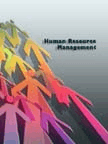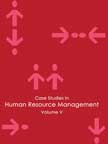Microsoft People Problems
|
ICMR HOME | Case Studies Collection
» Human Resource and Organization Behavior Case Studies 
Custom Search
Please note: |
||||||
|
"I hire smart people that are pretty high bandwidth, and I challenge them to think. I ask them to be pretty committed and to work pretty hard." -Bill Gates, Founder of Microsoft1 "The real problem for Microsoft is going to be to learn to use the carrot when the stick has been the dominant tool." -Jim Seymour, president, Seymour Group, an information-strategies consulting firm.2 Some observers suggested that this initiative was undertaken because of the anti-trust proceedings initiated against Microsoft the previous year. The company feared the court would rule that Microsoft be split into two companies - one for Windows and the other for applications software, and wanted to be ahead of the ruling.
Microsoft, one of the biggest and, arguably, the most powerful company in the software industry, experienced a unique problem in the late 1990s. A large number of its top executives left the company to retire or set up their own businesses. Most of these employees had been with the company for between five and ten years and had played an important role during its phase of growth. As the company grew in size and power, it became more bureaucratic and lost some the elements of the work culture that had so endeared it to employees when it was growing. This change in culture, coupled with the internet boom of that period, prompted the employees to leave the company and set out on their own. The restructuring initiative also was meant to overcome some of the disadvantages of size, and create a new work culture at Microsoft.
Microsoft People Problems - Next Page>>
1] Kathy Rebello, Evan.I. Scwartz, "Microsoft; Bill
Gates's Baby Is on Top of the World. Can It Stay There?", Business Week,
February 24, 1992. |
Case Studies Links:-
Case Studies,
Short Case Studies,
Simplified Case Studies.
Other Case Studies:-
Multimedia Case Studies,
Cases in Other Languages.
Business Reports Link:-
Business Reports.
Books:-
Textbooks,
Workbooks,
Case Study Volumes.









